Home » Articles posted by Tessa Sanderson (Page 9)
Author Archives: Tessa Sanderson
Chevy Unleashes “The Beast”: A 650-Horsepower Supercharged Pickup Truck
Chevy has unleashed the Beast.
Debuting at SEMA, the 650-horsepower desert runner is built on a Silverado chassis and features tubular doors, a lightweight clamshell-type front end and a widened 91-inch track supported by high-performance suspension.
“The Chevy Beast concept takes the popularity of high-performance off-road trucks to the next level,” said Jim Campbell, GM U.S. vice president of Performance and Motorsports. “It’s a vision for a new dimension of Chevrolet Performance capability from a brand that’s been pioneering performance and supporting customer personalization for more than 50 years.”
Engineers started with the chassis of a Silverado short-bed model and modified it for high-speed desert running. The frame was shortened. A custom-designed, 4130 chromoly tubular safety structure was integrated, while the modified chassis was wrapped with a custom, lightweight body.
A Chevrolet Performance LT4 6.2L supercharged V8 that’s rated at 650 horsepower is bolted to a 10L90 10-speed automatic transmission that sends torque to a two-speed transfer case and distributes it to 37-inch-tall off-road tires mounted on 20-inch beadlock wheels. The concept also includes the Chevrolet Performance Big Brake Upgrade System.

A Chevrolet Performance LT4 6.2L supercharged V8 crate engine powers the Beast.ChevyFront suspension comes courtesy of concept upper and lower control arms and fully adjustable racing strut assemblies with remote reservoirs. The rear is treated to concept 5-link suspension with Panhard bar and fully adjustable racing shocks with remote reservoirs. Disc brakes are mounted at all four wheels and include Chevrolet Performance Brembo brakes equipped in the front with six-piston calipers.
A pair of spare tires are mounted in the bed while the rear of the vehicle itself is left open to help extract dust. Additional unique design cues include a custom front grille, front and rear bowtie emblems and off-road lighting from Baja Designs.
Inside, the customized cab has a minimalist, functional design, featuring a quartet of Recaro performance seats with four-point harnesses, as well as a pair of 7-inch-diagonal LCD screens that monitor vehicle functions and performance data, including pitch and roll during off-road driving scenarios.
“There’s nothing else like The Chevy Beast,” said Jeff Trush, GM program manager, Pace Car and Specialty Show Vehicles. “It delivers a ton of performance and capability, which makes it adept at conquering rough terrain — and it flat-out flies in desert running.”
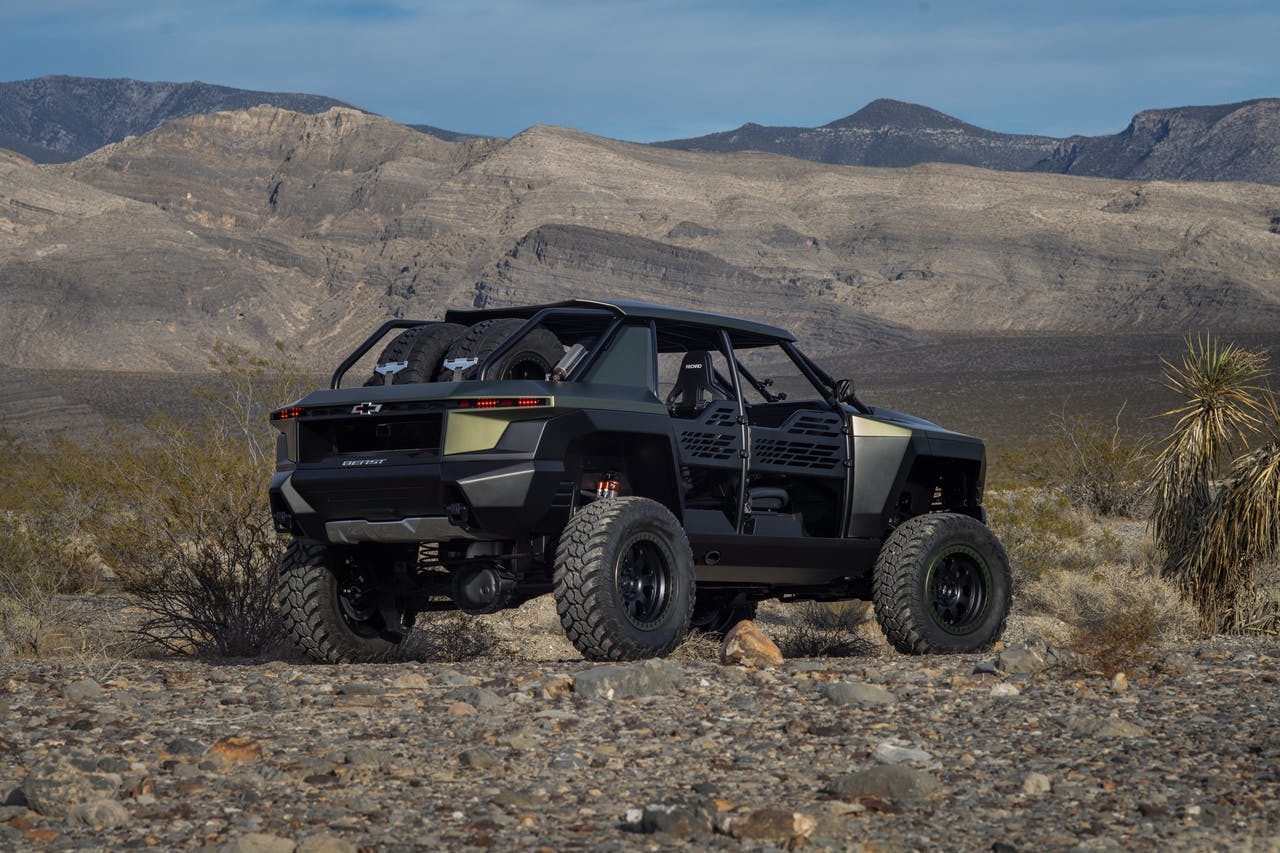

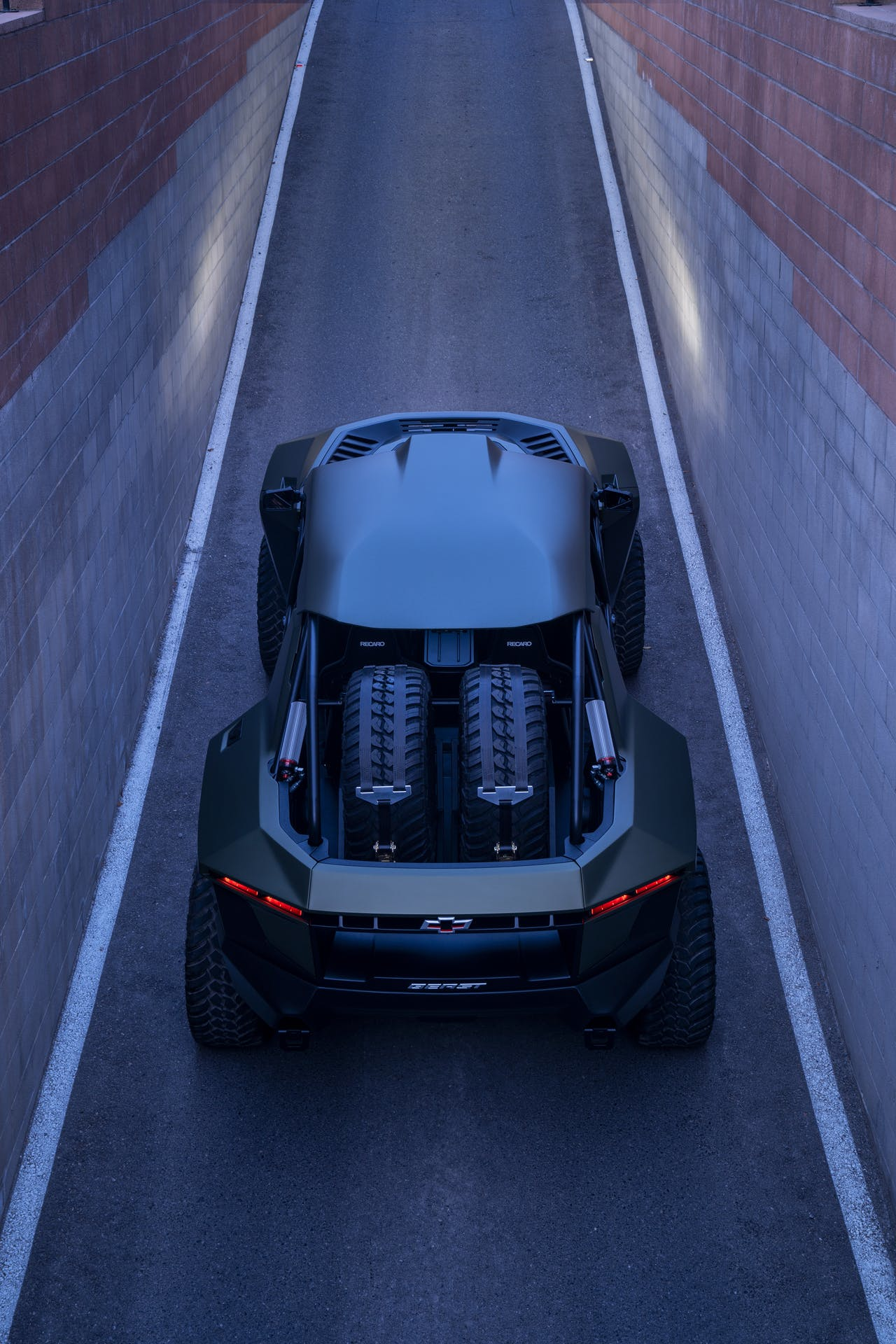
Did you miss our previous article…
https://constructionosa.org/?p=925
Video: Raising the U.S., Canadian Towers for the Gordie Howe Bridge
Construction progresses on what will become the longest cable-stayed main span in North America, on the Gordie Howe International Bridge between the U.S. and Canada.
And the construction is not without some patriotic spirit as this video by the Gordie Howe International Bridge Project shows of the rising of the Detroit-side tower between November 2020 and September 2021:
CMSBrowserComponents.load({ el: ‘#vue-1637339870827-259’, name: ‘OEmbed’, props: {“mountPoint”:”/__oembed”,”url”:”https://youtu.be/EJZFgBLve7U”,”attrs”:{“type”:”oembed”,”id”:”https://youtu.be/EJZFgBLve7U”,”element”:”aside”}}, hydrate: false });
The post-tensioning of the foundations for the two towers, one in Detroit and one in Windsor, Ontario, was completed in summer. Work continues on building the towers, which will each stand 720 tall.
The two towers’ temporary climbing systems, which rise as the towers rise, also currently depict images and colors to represent the U.S. and Canada, respectively.
On the Detroit side, the images include murals of an eagle, the “Spirit of Detroit” monument and an American flag with workers in the foreground – all on a blue background. The murals on the Canadian side depict the maple leaf, polar bears and other cultural scenes.
Check out this video by the Gordie Howe International Bridge Project of the tower construction on the Canadian side of the Detroit River between July 2020 and September 2021:
CMSBrowserComponents.load({ el: ‘#vue-1637339870827-503’, name: ‘OEmbed’, props: {“mountPoint”:”/__oembed”,”url”:”https://youtu.be/87RTDvGIbb4″,”attrs”:{“type”:”oembed”,”id”:”https://youtu.be/87RTDvGIbb4″,”element”:”aside”}}, hydrate: false });
A total of 1,426 steel strands were used to connect the tower footings on the U.S. and Canadian towers, according to the Windsor-Detroit Bridge Authority. Each strand is 236 feet long and weighs 519 pounds.
“The cables pull the footings together, so they work as one and handle the tower loads and eventually the road deck,” says Frank Raji, the bridge authority’s director of construction.
When the six-lane bridge opens, which is expected to occur in 2024, it will have the longest main span of any cable-stayed bridge in North America at .53 miles, according to the bridge authority.
The towers are at about half the 722-foot height they will eventually reach. The road surface will be at 138 feet high.
The towers have an inverted “Y” design, with the top pylon head at 262 feet to house the 216-strand cable-stayed system.
The $4.4 billion bridge is being designed, constructed and will be maintained by a partnership of Fluor, ACS Infrastructure Canada and Aecon Group. Construction began in 2018.
Images below show the tower pylon designs and a rendering of the completed bridge:

The climbing systems for the U.S. tower feature murals by Detroit artist Roberto Villalobos.Gordie Howe International Bridge Project
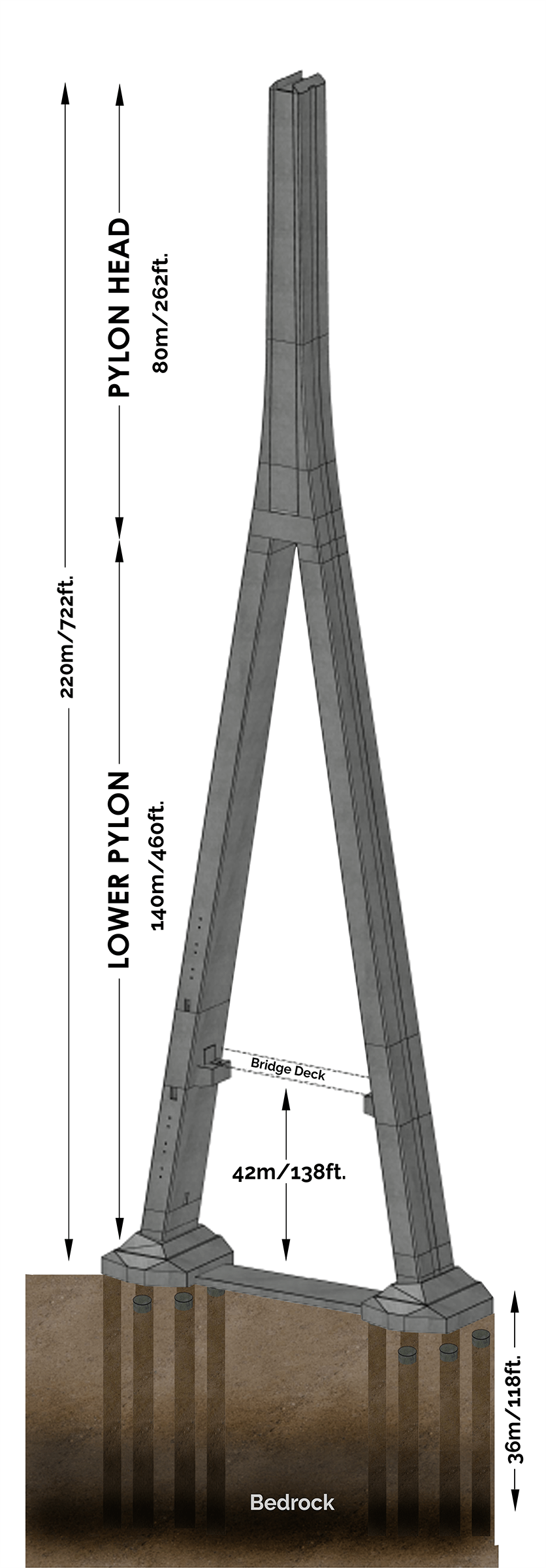
A schematic drawing for the pylon design for the towers for the Gordie Howe International BridgeGordie Howe International Bridge Project

A rendering of the future Gordie Howe International Bridge, scheduled to be completed in 2024.Gordie Howe International Bridge Project
Did you miss our previous article…
https://constructionosa.org/?p=920
Arizona DOT Prepares to Build Flex Lanes, Widen Busy I-17 Near Phoenix
Work is set to begin next year on a three-year, $446 million widening of Interstate 17 north of Phoenix.
The project, which includes 15 miles of widening and 8 miles of new flex lanes, would alleviate congestion and improve safety, according to the Arizona Department of Transportation. ADOT recently awarded the contract to design, build, operate and maintain the expanded roadway to a joint venture of Kiewit Infrastructure West and Fann Contracting.
The DOT says the 23-mile section of I-17 between Anthem Way and Sunset Point carries 1 million travelers a year, with most traffic on weekends. Along with road widening and flex lanes, the project involves two bridge replacements, one bridge deck replacement and the widening of 10 bridges.
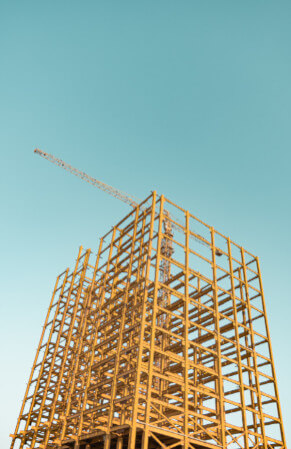
A map of the 23-mile project area to widen and add flex lanes to Interstate 17 between Phoenix and Flagstaff, Arizona.Arizona Department of TransportationThe 8 miles of flex lanes would be used during peak travel times and in emergencies. Drivers would pass through a gate to enter the lanes, which would be separated from the main highway lanes by a concrete barrier. The two lanes, on a mountainous, curvy section between Black Canyon City and Sunset Point, would carry travelers in one direction, with that direction switching to accommodate traffic needs.
For example, says ADOT, the flex lanes would be able to carry heavy northbound traffic on a Friday or heavy southbound traffic on a Sunday. They could also be opened in an emergency.
I-17 currently has two lanes of travel in each direction and provides a highway connection between Phoenix and Flagstaff, from I-10 to I-40. The 15 miles of roadway between Anthem Way and Black Canyon City would be widened an additional lane in each direction to four lanes. Then from Black Canyon City to Sunset Point, the two separated flex lanes would be added to the southbound road.
Here’s a video rendering by ADOT of how the flex lanes would work:
CMSBrowserComponents.load({ el: ‘#vue-1637356794241-417’, name: ‘OEmbed’, props: {“mountPoint”:”/__oembed”,”url”:”https://youtu.be/EbJNh2hlso0″,”attrs”:{“type”:”oembed”,”id”:”https://youtu.be/EbJNh2hlso0″,”element”:”aside”}}, hydrate: false });
Did you miss our previous article…
https://constructionosa.org/?p=917
B2W’s One Platform Streamlines Equipment Inspections, Repairs
B2W Software has introduced a new API within its One Platform that streamlines equipment inspection and repairs and also ties together inspection and maintenance software with its other applications.
An API (Application Programming Interface) is a software program that allows two other separate software applications to talk to one another in a common language. With it, information in one application can automatically populate fields in another application.
The B2W Maintain equipment maintenance application within the One Platform can now generate repair requests automatically based on data from electronic forms used for completing equipment inspections. The process relays detailed information from equipment inspections to the maintenance team immediately. By eliminating lag time and manual steps for transferring this data, contractors can identify and complete equipment repair work more efficiently and break down information silos in their company.
“Along with the equipment maintenance module and the B2W Inform module for e-forms and reporting, the B2W platform includes applications for estimating, field tracking and resource scheduling,” says Greg Norris, marketing communications director. “When all of these are managed cohesively, there’s a tremendous opportunity for more efficiency.”
Going paperless

B2W’s inspection form can be set up to share data with maintenance and other applications instantly and automatically.B2W
In addition to enabling the different applications to talk to one another, B2W says its portfolio of products enable construction companies to run their business without generating mountains of paperwork. Paper forms slow down the flow of information, and it’s a difficult, manual process to build reports, identify trends and track KPIs, says John Kane, product manager. “Electronic forms make it faster and easier to capture better data and to make that data actionable.”
In a paper-based equipment inspection process, a form identifying repair needs might go from an operator to a foreman or supervisor, says Norris. The form could sit in the truck until the supervisor gets back to the office and then go in a stack that the shop may not get to for another week or two.
With a paperless system as soon as you hit the send button, the maintenance shop knows instantly and can make decisions that day on what priority to give this repair.
Customization
The B2W Inform e-forms application is customizable says Kane. “You can even recreate your old paper forms in a digital format and pick up where you left off to use the product right away. A shop manager might create the equipment forms. Other managers or administrators might create various forms for safety, HR and other requirements.”
One of the advantages with the electronic equipment inspection forms is they can be specific to each piece of equipment, says Norris. “With paper, because it was so hard to manage, you might use a general equipment inspection form. But each piece of equipment has its own unique things that you may want to inspect. With the electronic forms you can create a form for every category of equipment versus using a generic form across all equipment. And this has clear advantages in terms of the quality of data, you collect.”
Implementation
Setting up a construction company with B2W Maintain, including the paperless inspection process takes some time and effort, but says Kane, it’s not rocket science.
“If you have B2W for estimating and field tracking and you add B2W for equipment maintenance, you have the operational database mostly in place,” says Kane. “There’s a continuity there as opposed to choosing an equipment program from a third party. “You’re part of the way there already.”
The implementation of the maintenance software at that point is much less cumbersome simply because your equipment, your users and resources are in the system, says Kane. “It’s basically adding more detail about the equipment and adjusting your maintenance processes to optimize the software.”
“Some contractors buy the whole B2W platform at once, and some people buy a module at a time,” says Norris. “With the B2W Inform application, we have a library of basic forms you can use as a starting point. It’s a drag and drop process. It’s not something you need an IT department to do. Almost anybody can create forms and build reports.”
Timelines
B2W training and implementation teams work with contractors to get them up and running says Kane. The training and implementation timeframe will depend on type and number of B2W applications as well as the complexity of the data you want to manage.
“From customer to customer, every data set can be completely different,” says Kane. So we implement the product based on their business needs and how they want to do business and train towards that. We do a lot of analysis upfront. This gives them a product at the end that is very specific, familiar, and allows them to hit the ground running.”
Did you miss our previous article…
https://constructionosa.org/?p=914
Cat Boosts Power, Speed on New 304, 305 CR Compact Excavators
Completing its family of Next Generation compact hydraulic excavators, Caterpillar unveiled the reengineered 304 and 305 CR.
Cat says both machines deliver up to a 20 percent increase in performance with up to 10 percent lower owning and operating costs compared with previous models.
“The technology we’ve put in these machines gives us a base for growing and expanding the offering even further,” says Greg Worley, Cat product expert. “We don’t end here. We’ll continue to grow and develop these machines with some of those technologies you see in the larger Caterpillar world.”
Cat now offers 17 compact excavator models ranging from the 1.5- to 10-ton size class. Common features and a consistent control layout across the range make training and operation easier, the manufacturer says.
Before we dig into the differences, let’s take a look at some of the commonalities between the two machines.
Performance Enhancements
Both new machines can travel faster, lift more and multifunction better compared to E2 series. This is due to a new engine and hydraulic system improvements.
Meeting Tier 4 Final and EU Stage V emissions standards, the Cat C1.7 Turbo engine delivers more power than the previous C2.4 engine. Fuel usage is reduced through standard auto-idle, auto-engine shutdown and efficient load-sensing hydraulics with a variable displacement pump.
High main-relief pressures, paired with flow rates, generate the hydraulic capacity for high digging and lifting forces and more efficient use of a range of attachments. Complete with quick-disconnect lines, the standard auxiliary system provides the choice of one-way, two-way or continuous flow.
Inside the Cab
If the cab looks familiar, that’s because it is the same one on other Next Gen models.
“Inside the cab, seat forward – the monitors, the console, the controls, the pattern changer – everything is common through the range of our machines from the 1.5- to the 10-ton,” says Worley. “Operators aren’t readily available like they used to be. Commonality is great as you’re moving from one machine to another.”
The sealed and pressurized cab enclosure is available with heating and/or air conditioning. A canopy option is available in some regions.
The Next Generation LCD monitor features a large display. An advanced option offers an intuitive touchscreen and camera monitoring.
As with other Next Gen models, the 304 and 305 CR feature cruise control and stick steer to help reduce operator fatigue, increase productivity and move around the jobsite more easily. With the push of a button, operators can activate stick steer and switch from conventional lever/foot-pedal steering controls to joystick operation.
Angle blade uptake has doubled on compact excavators with the addition of stick steer, Worley says. “You can put the blade in your right hand and use it just like a small dozer or track-type tractor. People can now do better grading and finishing with this angle blade.” The angle blade moves 45 degrees left or right of center.

Daily maintenance checks for the 304 and 305 CR are quickly made from ground level through side doors.Equipment WorldService and Maintenance
The 304 and 305 CR offer up to 10 percent lower total cost of ownership versus previous models because of lower maintenance and repair costs. These cost savings are achieved through:
Extended service intervalsParts commonality across modelsFlat, easy-to-fix panelsGround-level service accessCost-effective maintenance parts
While cab units feature an upward exhaust, major design changes were made to reroute the exhaust on the canopy units. This change was made as more information has become available on Tier 4 Final engines. “On the canopy machines, we bring the exhaust back through the counterweight,” Worley says. “If you’re in landscaping and working around the machine you don’t want that sound and exhaust near the operator, so we’ve taken it down away from them.”
304 now reduced radius – not compact radius
Don’t compare the new 304 to the E2 series, Cat says; it’s a completely redesigned model. Cat moved away from the compact-radius design to increase stability and balance on the 4-ton machine.
The tracks return to 67 inches wide, 10 inches slimmer than the 304 E2, a size that easily fits in tight spaces and on trailers. Track options include a rubber belt or steel track.
Operators will notice better digging and trenching, as well as the ability to carry heavy loads without tipping forward. “It makes it a better machine by making it a reduced radius,” says Worley. “Without changing any hydraulics, your backfill is greatly improved.”
With no extra counterweight, the 304 has a 14-inch overhang. With the optional 496-pound counterweight, the overhang is 18 inches.
The machine maintains 40 mm pins, so operators can use the same attachments and couplers as previous models.
305 CR “a true 5-ton machine”
An upgrade to the 305 E2, the 305 CR delivers nearly 9 percent more power with 11,061 pounds of bucket breakout force, 6,362 pounds of standard stick digging force and 5,665 pounds of long stick digging force. It also offers 5.6 inches deeper dig depths than the 305 E2, giving it more application flexibility.
The 305 CR offers 78-inch tracks for added stability and comes in three options: a rubber belt, steel track or steel track with rubber pads. “The steel track with rubber pads gives you the best of both worlds,” says Worley. “You can jump the curbs and have the strength and durability of a steel track. It also adds a lot of low-down weight to this machine, so you don’t actually need the extra counterweight with this type of configuration because you’ve got some naturally built-in weight.”
So, when should the extra counterweight option be used? Consider adding it if you’re using a heavy attachment configuration, like a tiltrotate system. The TRS6 is compatible with the 305 CR. The machine maintains 45 mm pins for compatibility with previous attachments.
Sneak peek: More technology, attachments coming
Cat also previewed some of the technologies from larger machines that will be trickling down to the smaller models.
By the end of the year, excavators from the 3.5- to 10-ton range will be Cat Grade capable. While the grade control technology will not be factory installed, it will be available as an aftermarket kit through Cat/Sitech dealerships.
Grade with advanced 2D includes hardware, sensors and a dedicated monitor for grade plan creation, editing and viewing. Grade with 3D includes GNSS receivers and antennas. A site radio is required for both 2D and 3D. Boom swing will not be supported by the system.
Tiltrotate systems will also be available for 3.5- to 4-ton machines in the first quarter of 2022. The new TRS4 will be Cat Grade supported for tilt, but not rotation.
Quick Specs
Model304305 CREngineCat® C1.7 TurboCat® C1.7 TurboNet power45 hp45 hpGross power48.4 hp48.4 hpMin. weight with cab8,875 lb11,234 lbMax. weight with cab9,867 lb12,688 lbTail swing radiusReducedCompactDig depth standard126.4 in 134.6Dig depth long138.2 in144.5 in
Net power advertised is the power available at the flywheel when the engine is equipped with fan at minimum speed, air intake system, exhaust system, and alternator.
Did you miss our previous article…
https://constructionosa.org/?p=905
Work Begins on Freeway Outer Loop for Lubbock, Texas
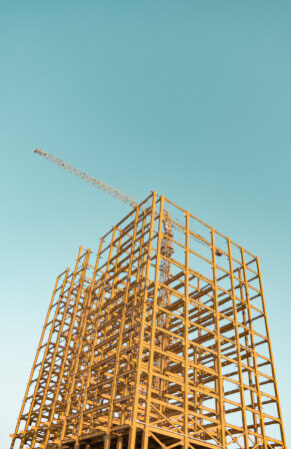
Work has begun on what will eventually become an outer loop around Lubbock, Texas, starting with transforming a two-lane rural road into a six-lane freeway.
The entire seven-phase project, expected to take 20 years to complete, has been in planning for more than 10 years, according to the Texas Department of Transportation. On November 8, the department held a groundbreaking on the first two construction phases, covering 4 miles of the planned 36-mile loop.
Phases 3A and 3B are expected to take up to five years to complete at a cost of $155 billion. Sacyr Construction USA of Miami won the construction contract.
The project involves transforming FM 1585 into a freeway with frontage roads, bridges and ramps. The current road handles about 50,000 to 60,000 vehicles a day, and the loop is designed to handle future traffic for the growing city.
Crews will begin work by creating retention ponds at four locations before beginning work on an underground drainage system, according to TxDOT. The DOT plans to keep one lane of traffic open in each direction throughout construction.
Phases 3A and 3B are the first of seven phases along the 12.4-mile Segment 3 of the Loop 88 corridor. Segment 3 extends from U.S. 87 to U.S. 62/82 in Wolfforth and will cost an estimated $600 million.
Phase 3C, which includes the U.S. 87 interchange, is scheduled for construction to begin in 2026.
“We’re excited to finally turn dirt and see the hard work the TxDOT Lubbock District has put into research, public meetings and roadway designs becoming a reality,” said Michael Wittie, TxDOT Lubbock area engineer.
Lubbock Loop 88 will eventually create an outer loop around the west and south areas of Lubbock. Its construction phases are broken down into four segments, with each segment having five different sections. Bid lettings for future phases of Segment 3 are scheduled out until October 2031.
Did you miss our previous article…
https://constructionosa.org/?p=896
Toromont reports 8% increase in revenues for Q3
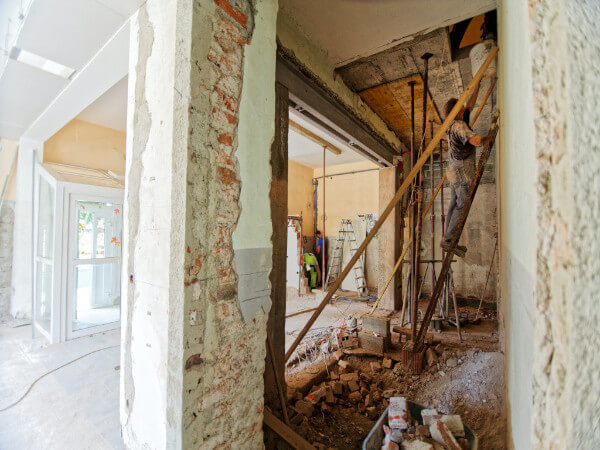
Toromont Industries, based in Ontario, Canada, is reporting a revenue increase of 8 percent in the third quarter and 18 percent year-to-date.
“We are pleased with our operating performance, financial results, cash generation and financial position through a challenging business environment,” says Scott J. Medhurst, president and CEO. “The Equipment Group reported strong prime product deliveries and excellent order bookings. Rental activity and fleet utilization improved with more favorable markets. Tight supply of equipment from manufacturers coupled with stronger sales activity versus last year have resulted in lower equipment inventories.”
The company’s Equipment Group saw revenues up $389.1 million to $2.7 billion year-to-date with similar trends as the quarter. Strong equipment sales drove growth, while product support and rental activity continues to increase as well.
Driven by mining and construction, bookings increased 45 percent to $539.9 million in the quarter and 85 percent to $1.9 billion year-to-date.
Production timing and tight supply of equipment from manufacturers is beginning to drag out delivery to end customers. Backlogs were at $903.5 million as of September, an increase of 253 percent from the same time in 2020, according to the company.
“Activity remained sound as demonstrated by new bookings and our current backlog levels, but production schedules and supply chains are challenged,” says Medhurst. “This has restricted availability and is likely to result in delivery date extensions. We continue to monitor cost pressures, supply-demand dynamics and potential distribution disruptions as the pandemic unfolds.”
Toromont Industries’ Equipment Group includes Caterpillar dealer locations for the Canadian provinces of Newfoundland & Labrador, Nova Scotia, New Brunswick, Prince Edward Island, Québec, Ontario and Manitoba, in addition to most of the territory of Nunavut. The group also includes rental operations, an agricultural equipment operation and a material handling business. In addition to its Equipment Group, the company also designs and installs industrial and refrigeration systems through its CIMCO division.
Did you miss our previous article…
https://constructionosa.org/?p=890
These 14 Skid Steer, CTL Attachments Go Beyond Mere Material Handling
As the number and popularity of compact construction equipment continue to grow, so do the outpourings of attachments for performing a wide range of tasks beyond moving material.
You can turn you skid steer or compact track loader into a snowblower, landclearer, earthmover and even a demolition machine.
So if you want to expand the range of your skid steer or CTL beyond loading and unloading material, check out these 14 attachments:
Earthmoving
The Dual Dozer laser grading system (pictured at the top of this story) from HitchDoc for finish grading features a dual-sided cutting edge so you can push or pull material and grade in any direction. Rear-mounted wheels let you bring more material to low spots, make tight corners and place material closer to edges. The Dual Dozer can be ordered with a standard quick-tach plate, three-point mount or both. It is compatible with Trimble, Topcon and Leica 3D or GPS mapping systems. The blade attachment can self-articulate up to 8 inches on either side. It comes with in-cab monitors and fingertip switches.

Danuser Stump Auger with EP Auger SystemDanuserDanuser’s new EP Auger System, which is compatible with the company’s new Stump Auger, is now available for mini skid-steers, also known as compact utility loaders, with a planetary gear drive that is up to 42% stronger with greater torque for drilling through hard-compacted surfaces. Models range from 6 to 35 gallons per minute of hydraulic flow and from 1,500 to 3,500 psi. The Stump Auger is available in 10- or 16-inch diameters. A threaded pilot digs into the stump, and large cutting blades shave it away. The blades are reversible.

General Equipment’s 471 DIG-R-TACHGeneral EquipmentGeneral Equipment Company’s 471 DIG-R-TACH hydraulically powered earth drilling attachment system is designed for use with machines with lower auxiliary hydraulic flow rates. It comes with a universal mounting bracket that matches a variety of bucket configurations. It can be mounted quickly and easily on the loader’s bucket by one person without special tools, drilling or welding because of positive-locking bracket grips. Augers are available in diameters of 2 to 24 inches to produce a clean 4-foot-deep hole. Auger extensions are also available
Landclearing
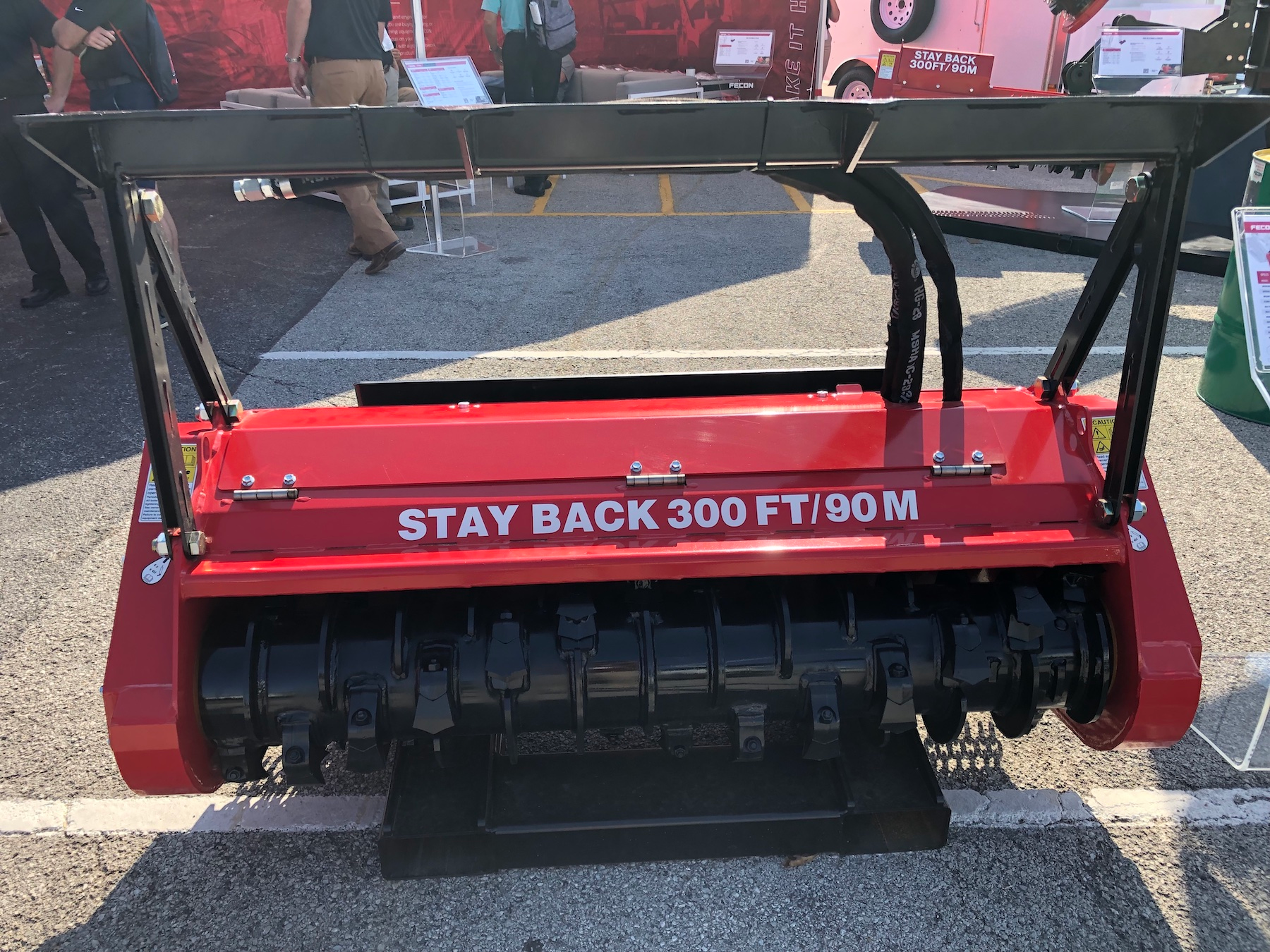
Fecon RK6015 standard-flow skid steer mulcherEquipment WorldFecon’s new RK6015 mulcher is designed for standard-flow skid steers and CTLs of 50 to 75 horsepower and can chew through brush and trees up to 5 inches in diameter. The RK6015 has a working width of 60 inches and includes a split-ring design to limit the bite and maintain production. Features include a variable displacement 45cc hydraulic motor and adjustable bolt-on push bar with serrated ears for directing material. Flow ranges are 17 to 27 gallons per minute, and max pressure of 4,000 psi.
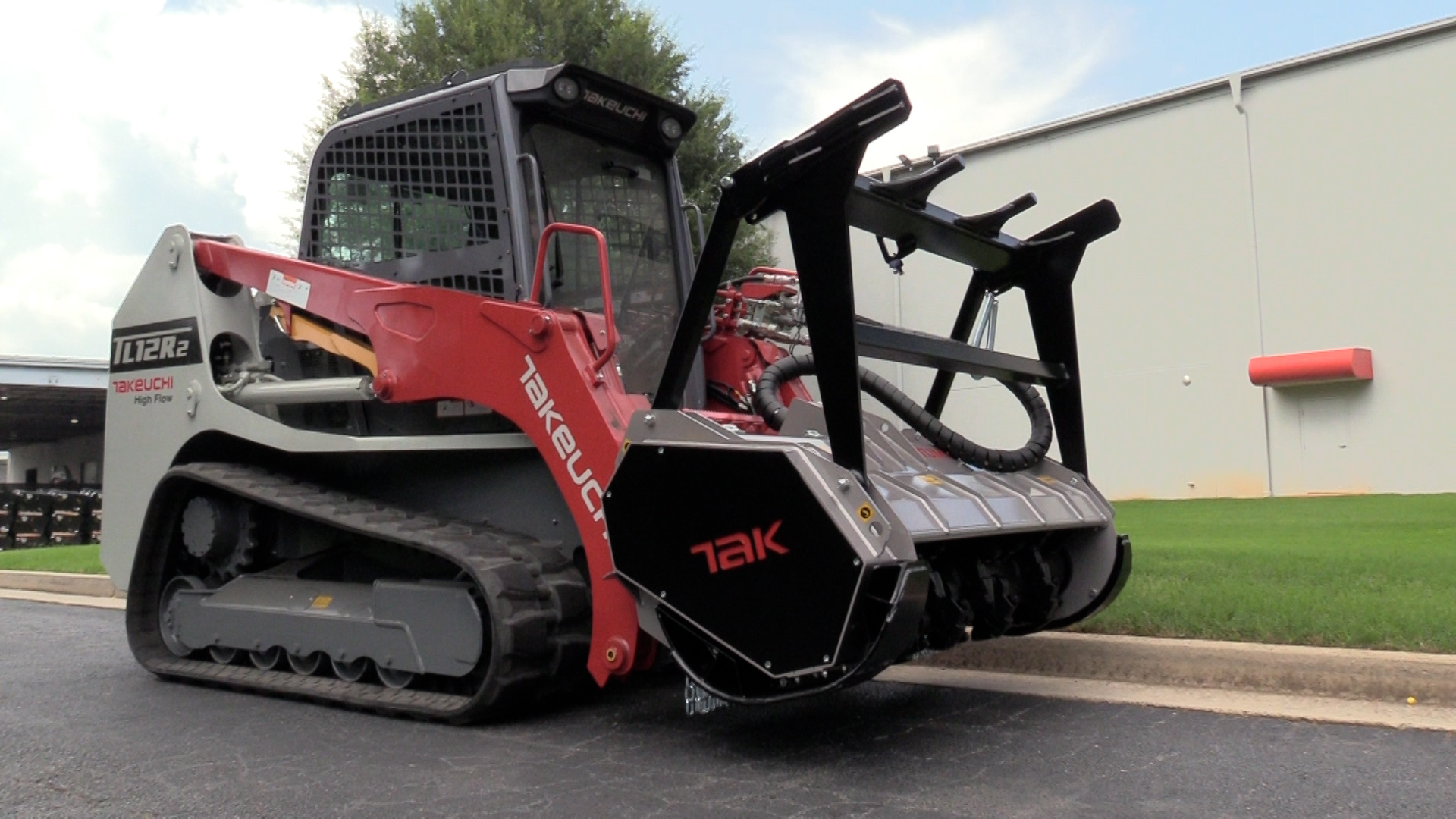
Takeuchi TUML forestry mulcherTakeuchiTakeuchi’s TUML series Forestry Mulchers come standard or with bite-limiter drums, which limit tooth engagement to maintain motor speed while reducing stalling. The mulchers feature a low-profile frame design for better visibility and an enclosed door drive that prevents dirt from entering the machine’s service areas. Heavy-duty adjustable skids and reinforced side panels deliver durability and frame strength to handle the force of the carrier. The mulchers’ design with a protruding rotor allows more material to be processed quicker.
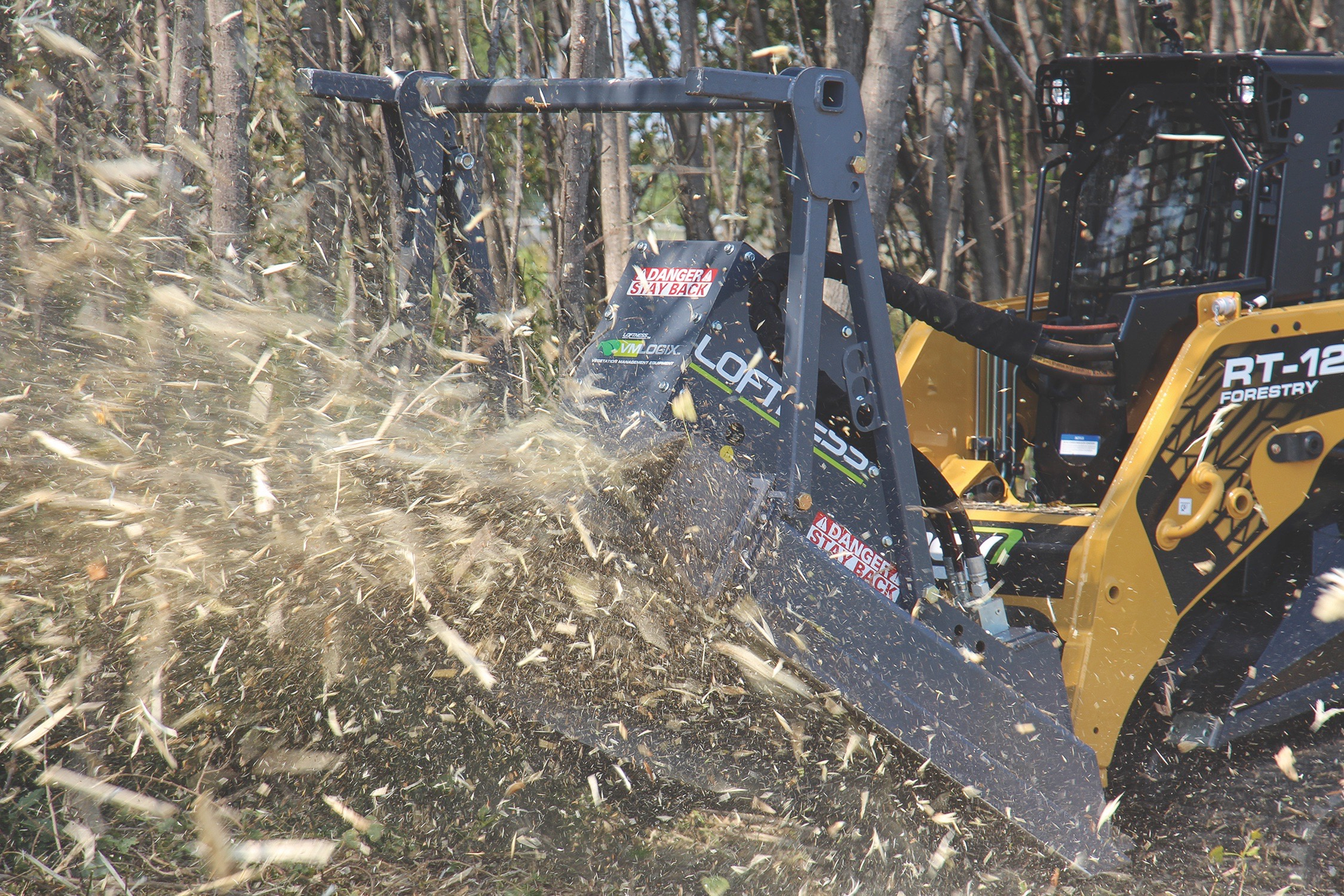
Loftness Bad AxLoftnessLoftnessBad Ax disc mulcher is designed for landclearing and vegetation control and cutting through trees up to 14 inches in diameter. The 60-inch-diameter disc contains no welds, so there are no areas subject to stress cracking. The disc is driven directly by the machine’s hydraulic motor. A recutter bar and counter teeth hold material in place while it is being mulched, enabling the mulcher to cut the material into fine particles and avoid jams in the chamber. The front of the housing is angled, allowing the teeth to mulch at ground level.
Snow clearing
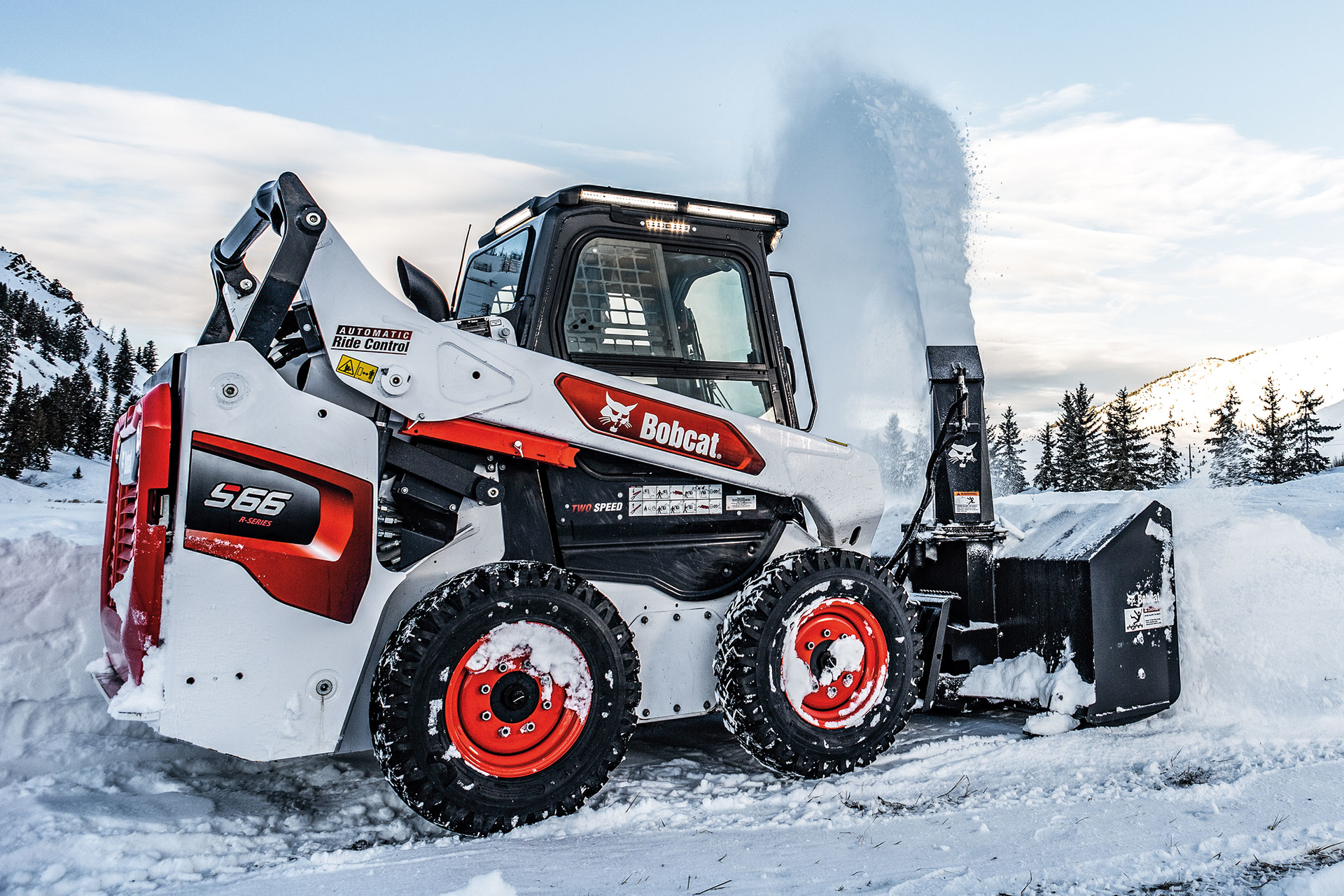
New Bobcat SnowblowerBobcatBobcat’s new snowblower attachment features increased intake height and a bigger auger to draw more snow into the blower for faster clearing and fewer passes. A direct-drive, sprocket-style chute rotation enables operators to point snow within 270 degrees for precise placement, even in hard-to-reach places such as ditches or inside wooded areas. It can break through ice buildup and does not use chains, which can rust, loosen or break. The chute’s rounded, smooth intake minimizes clogging and reduces resistance. A truck-loading chute is optional.

Fisher HDX snowplowFisherThe HDX straight-blade snowplow from Fisher is designed for fast, easy hookup. Its adjustable blade attack angle lets you customize your setup to plowing surfaces, weather conditions and plowing preferences. The blade angle is powered by the host machine’s hydraulic components. Relief valves protect the operator and the equipment when encountering hidden obstacles. The HDX can be used to clear large parking lots and can maneuver between cars and parking islands.
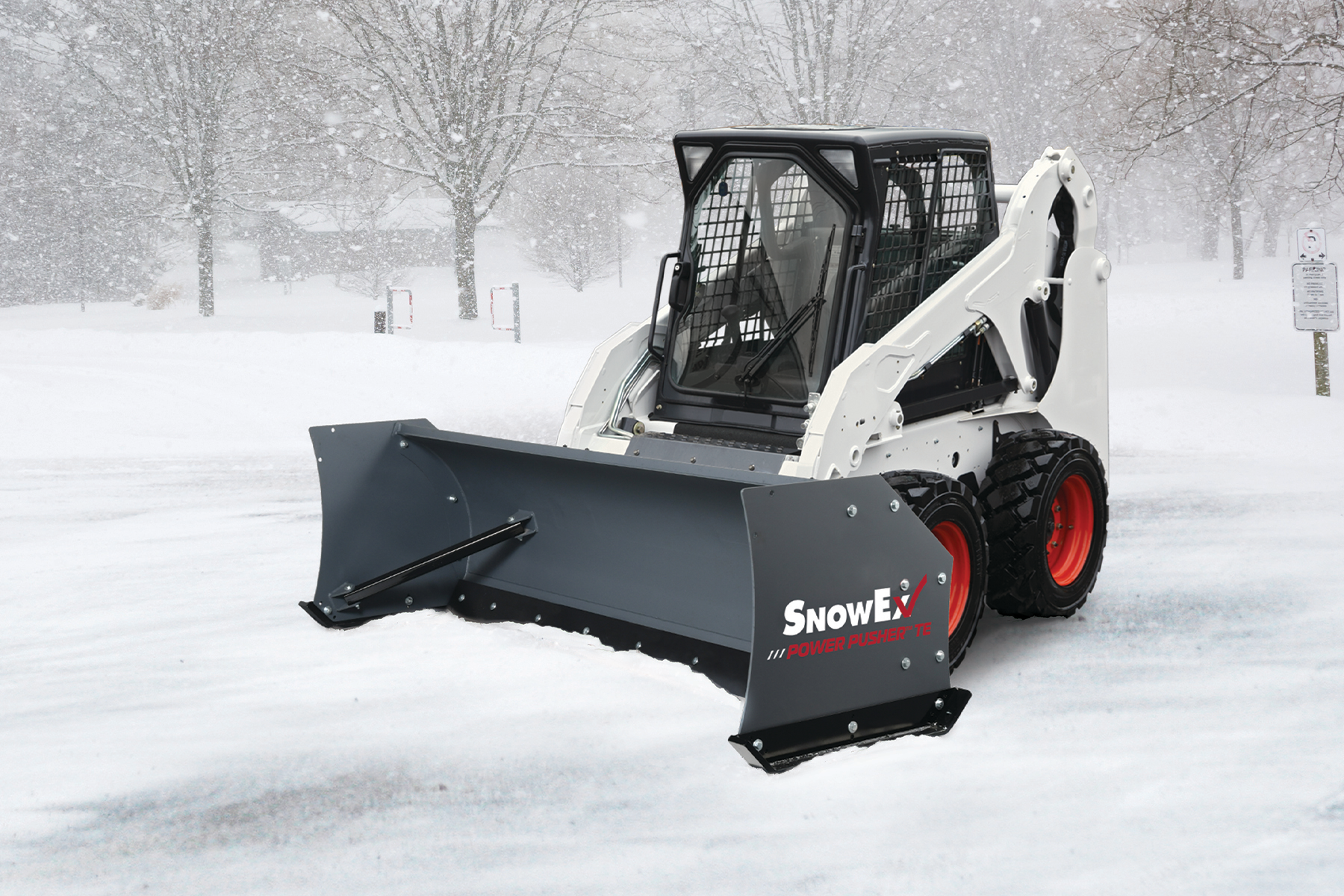
SnowEx Power TE steel trip-edge pusherSnowExThe SnowEx Power TE steel trip-edge pushers are designed to attack all types of surfaces and provide cleanly scraped, “down to black” pavement. The box plows attach quickly and easily to compact equipment and offer large carrying capacities. Built to handle heavy-duty loads and stresses, the trip-edge uses four extension springs along with two outer double ribs at the trip springs. The box comes in widths of 8 or 10 inches and a 63-degree angle of attack.
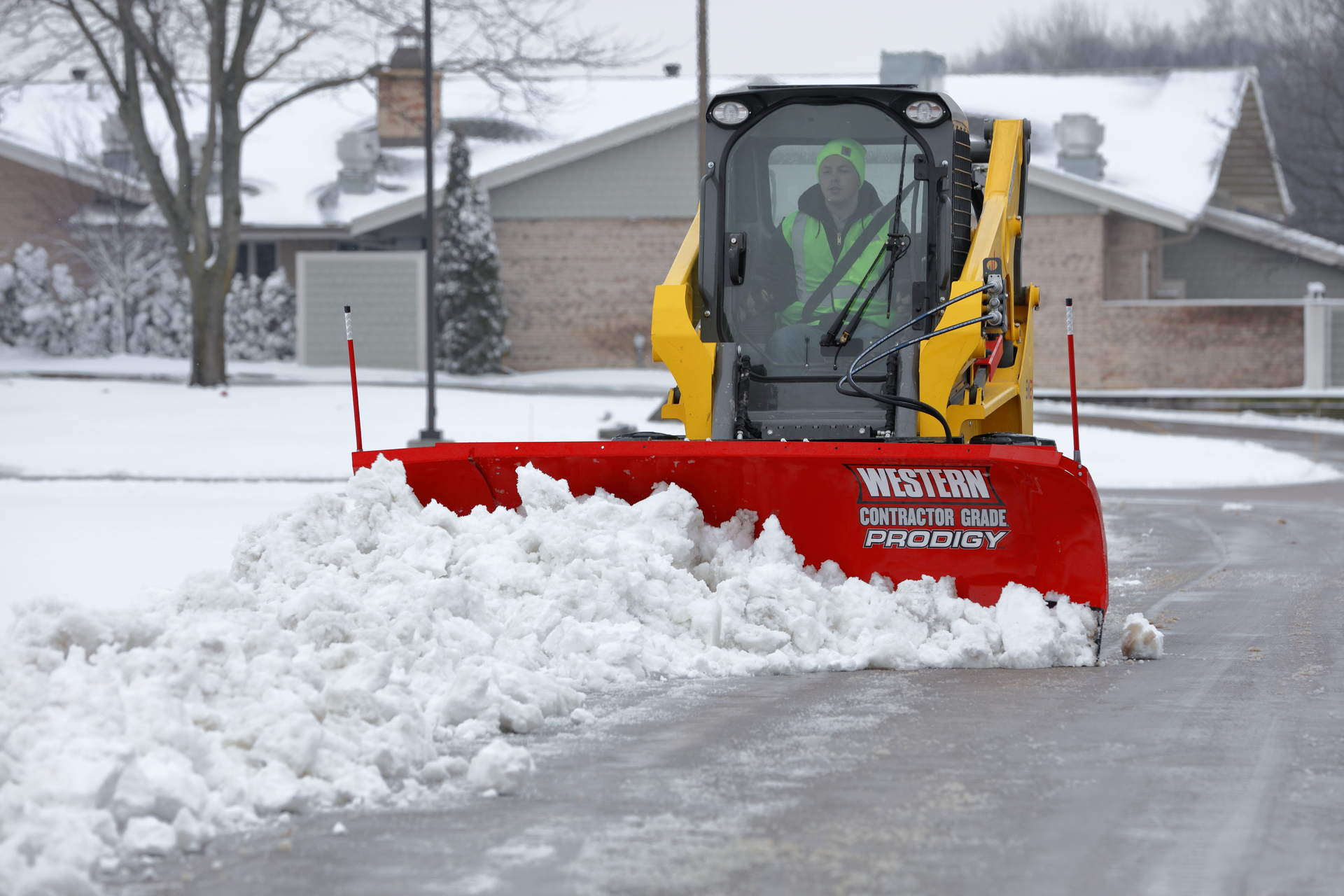
Western Prodigy snowplowWesternThe Western Prodigy skid steer snowplow features wings that move automatically with no additional wiring or controls. The universal skid-steer mounting plate makes hook-up fast and easy. Simply align the mounting plate with the skid-steer u-plate, engage the pins, and you’re ready to plow. The plow uses the skid steer’s hydraulic system to lift and lower the blade. It’s also available with an optional oscillating mount that provides 6 degrees of total side-to-side oscillation, helping to improve scrape and cutting-edge wear while reducing damage to the terrain.
Demolition

NPK demolition shearNPKNPK Demolition Shears are sized for skid steers ranging in the 5,000- to 6,500-pound class for demolition and steel-processing operations. The arm pin is designed to prevent distortion of the main frame and diminishes jaw deflection, which prevents material from jamming between the cutter blades. The shears features 360-degree rotation, low weight with large jaw opening and a slim design for better visibility. The cutting blades are wave shaped for better grip and control of material. The shears can also be used on compact excavators of 7,000 to 20,000 pounds.

RJB Hydraulic HammerRJBRJB Hydraulic Hammers’ new Skid Steer/Mini Combo Bracket works with both skid steers and compact excavators of 3.5 to 6 metric tons. The bracket allows the company’s HK45 hydraulic hammer to be used on both a skid steer and a compact excavator. The HK45 is in the 1,000-foot-pound impact class for work on larger concrete jobs. It comes with a tool diameter of almost 3 inches. The combo bracket enables the operator to simply detach the skid steer plate by pulling out the pin set, which takes less than 5 minutes. Re-installing the skid steer plate is just as easy, the company says.
Sweeping

Virnig’s Internal Water Tank BroomVirnigWhen it comes time to clean up your jobsite, Virnig’s Internal Water Tank Broom for skid steers controls dust as you sweep. The protected 55-gallon tank behind the bucket provides 35 minutes of continuous runtime. The translucent tank has capacity indicators so water level can be viewed by the operator while in the cab. The guarded adjustable valve regulates water pressure to the nozzles. The broom is available in 72 or 84 inches. Features on the broom include a recessed and guarded direct drive motor, heavy-duty bucket with wear bars, bolt-on edge, oversized 2-inch bearing, poly/wire bristles and pin adjustment system.
Quick attach
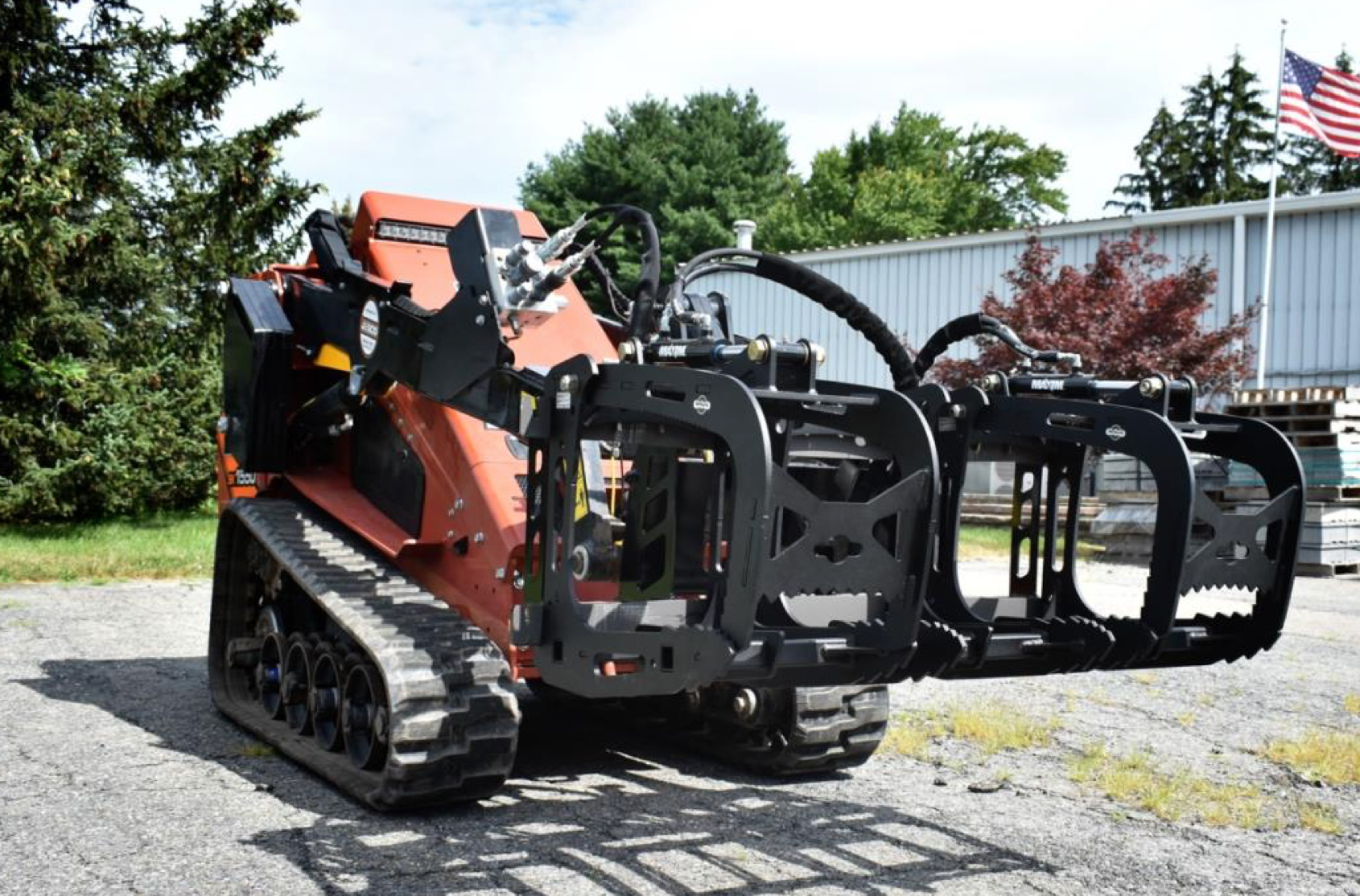
Artillian Tractor quick attach frame for mini skid steersArtillian TractorArtillian Tractor has a new Mini Skid Steer Quick Attach Frame for compact utility loaders. The frame can handle loads up to 3,000 pounds and can be used with Artillian pallet forks, grapples, stump buckets, hydraulic plow and other tools. The frame uses the Common Industry Interface loader quick attach and fits major CUL brands, including Bobcat, Boxer, Cormidi, Ditch Witch, Kanga, Ramrod, Toro and Vermeer. The Artillian frame features metal inert gas welded construction, baked on powder coat and high-strength North American steel.
Did you miss our previous article…
https://constructionosa.org/?p=875
Cat Next Gen Medium Wheel Loaders Pack a Technology Punch
Caterpillar has updated its 8- to 10-ton wheel loader line with a slew of standard technology features aimed at reducing maintenance costs, increasing operator productivity and improving fuel efficiency. Models joining the Next Generation lineup include the 966, 966 XE, 972 and 972XE.
“Every industry is seeing a shortage of labor. Anything that we can do to make these machines easier to operate, bring novice operators in, train them up and make them productive as soon as possible is where we’re focused on helping the industry,” says Bryan Cherry, Caterpillar global product marketing consultant.
The new machines ditch the lettered nomenclature and replace the M-series loaders unveiled in 2013 and upgraded in 2016.
All four models are powered by a Cat C9.3 B engine. The 966 and 972 models use smart technology to move more tons of material per hour, increasing productivity by up to 10 percent.
The 966 XE and 972 XE models use a continuously variable transmission (CVT), resulting in 35 percent better fuel efficiency than the standard transmission M-series. Prolonged service intervals plus efficiencies gained through the CVT powertrain result in even lower maintenance costs of up to 25 percent, further reducing operating costs.
Technology boosts efficiency, productivity
No more worrying about under- or overloading trucks leaving the yard. All four models feature standard Cat Payload with Assist. Operators can load to target the first time every time.
“The highest instantaneous fuel burn of a loader cycle is during the dig, not while traveling around,” says Scott Schmidtgall, Caterpillar product application specialist. “Assist features are focused on reducing fuel burn, getting more material in the bucket and lessening operator fatigue.”
Auto Set Tires reduce tire slip and wear by promoting proper loading techniques. “As you go into the pile, it provides lift command to set those front tires to make sure you have traction and that you’re not slipping, making for more efficient operation,” says Cherry.
Pair Auto Set Tires with the new Cat Autodig and the job becomes almost effortless. Autodig will automate the entire dig cycle from entering the pile all the way up through where you want to dump into the truck or whatever height you want to stop at. It’s a feature that benefits novice and experienced operators alike.
“You can put your senior operator in that cab and go through and record in Autodig. Then, put your new person in and he or she can see exactly what that 20-year veteran just did and how they got their bucket full,” says Cherry. “Or if you’re an expert operator and you go get that full bucket in the morning – and don’t want to have to do those controls – you can just replay that dig all day long.”
Optional Cat technologies help to further increase productivity and operation profitability of the updated series. Tip Off Assist helps operators hit the right tonnage every time. “Push a button and hit dump and that machine is going to tip the material off for you,” says Cherry. “It’s going to tip until it hits 10 tons. It’s going to rack back telling you that it’s done, and now you’ve accurately hit that last pass. It takes all the guesswork, all the anticipation and all the mental awareness from the operator out of the equation.”
Built with safety in mind
The most important thing on the jobsite is keeping people safe, and the Next Gen wheel loaders come with several new and enhanced features to increase visibility and awareness.
A high-definition rearview camera comes standard, or contractors can upgrade to the multi-view vision system for a 360-degree view around the machine.
Cat Detect radar technology is another optional feature for those looking to take safety to the next level. “Think of your car. We have radar out the back of the machine, so when you go in reverse, it is identifying any objects that are behind you and giving an audible alarm and a visual alarm in the cab,” says Cherry.
Standard monitored seatbelts can be enhanced with an exterior beacon to allow for easy checks of proper safety procedures. “There’s a green light in the cab and behind it. When you click your seat belt on, that green light illuminates,” says Cherry. “It’s very easy for a jobsite superintendent to drive around the site and know if that operator is wearing their seatbelt or not.”
Optional service lighting and access lighting allows operators to see in and out of the cab during those late-night and early morning shifts.
Fuel efficiency and performance
Productivity sees a bump while fuel burn continues to trend down on the Next Gen wheel loaders. Increases in performance and fuel efficiency in the 966 XE and 972 XE are made possible through the Integration of the CVT powertrain, engine, hydraulic and cooling systems.
The H-series released in 2005 averaged 5.75 gallons of fuel burned per hour. Today’s 966 XE averages 3.1 gallons per hour – that’s a 45 percent reduction over the H series and a 15 percent reduction over the M-series with powershift transmission.
Without the torque converter of mechanical drive systems, these loaders independently control engine rpm and machine speed to provide efficient digging, fine control and operation. Operators will experience smooth, fast accelerations and high speeds on grade with the CVT design. Speed-hold and anti-rollback features also enhance machine maneuvering on grade.
Advanced rimpull control helps to reduce tire wear and delivers optimal loading efficiency in the pile. Beyond saving fuel, the lower rated engine speed of the XE models reduces component wear and makes for quieter operation.

Less downtime ahead. The 500-hour service intervals have been eliminated on the 966 and 972 next generation wheel loaders.Equipment WorldMaintenance savings
Next Gen loaders can spend more time at work thanks to extended maintenance intervals for fluids and filters. The 966 and 972 series design extends maintenance intervals to 1,000 hours and eliminates the 500-hour service intervals.
An integrated optional Autolube reduces daily maintenance and increases component service life, while convenient access to hydraulic and electric service centers makes servicing the loaders fast and easyCombined, these design updates reduce maintenance costs up to 20 percent for the Cat 966 and 972 models and up to 25 percent for 966 XE and 972 XE loaders.
Technology also plays a role in improving loader servicing. Helping to manage fleet location, hours and maintenance schedules, the Cat App provides alerts for required maintenance and assists with requesting service from the local Cat dealer. Remote Troubleshoot connects the machine to the dealer’s service department via the internet to quickly diagnose fault codes without on-machine cable connection. Additionally, Remote Flash ensures the wheel loaders are operating with the most up-to-date software without impacting the production schedule.
Enhanced cab comfort
The Next Generation loaders got an all-new office as well. The redesigned cab features the following improvements:
Dynamic damper seats slow down travel for a smoother ride than an air cushion alone. Options include heating or heating and ventilation for year-round comfort.Sound suppression, seals and viscous mounts decrease noise levels for a quieter work environment.Seat-mounted electrohydraulic joystick steering reduces operator fatigue and provides better visibility than a steering wheel. (Bonus, this switch adds two more inches of legroom than the previous series. An HMU steering wheel is available as an option for the 966 and 972 powershift models.)A new dashboard and high-resolution touchscreen display provide intuitive and user-friendly loader controls.Application profiles set multiple machine parameters with the press of a button and can save more than 40 different operator settings.A wide door that unlocks remotely from the ground plus incline steps eases cab entry and exit.
Choosing the right wheel loader for your operation
So, which medium wheel loader should contractors choose for their needs? Other key differences between the models include engine horsepower, counterweight size and linkage. (See our quick specs below for more details.)
Available in capacities ranging from 3.75 to 18.25 cubic yards for the new 966 and 972 loader series, Cat Performance Series buckets balance shape against the machine’s linkage for higher fill factors and better material retention than other designs with the same rated capacity. Fusion Quick Coupler buckets enable rapid tool changes without leaving the cab, so the loaders move quickly from task to task.
The 972 outfitted with a 7-cubic-yard bucket will move 15-17 percent more material than a 966 outfitted with a 6-cubic-yard bucket. “[The 972] would be more of a three-pass loader, whereas the 966, depending on the trucks that you’re loading, might be more in that four-pass range. That’s a whole extra pass,” says Schmidtgall. “You’ve got to determine, do my production requirements demand a larger machine or is a smaller machine going to be adequate?”
In addition, special purpose-built options for the loaders include a configuration that offers higher payload capability for loose-aggregate-handling applications. Industrial and waste models feature the guarding and reinforcement required for working at transfer stations, recycling facilities, scrap yards and demolition sites. For demanding applications like steel mills and slag handling, the loaders can be ordered in the steel mill configuration that incorporates additional levels of safety.
Quick specs
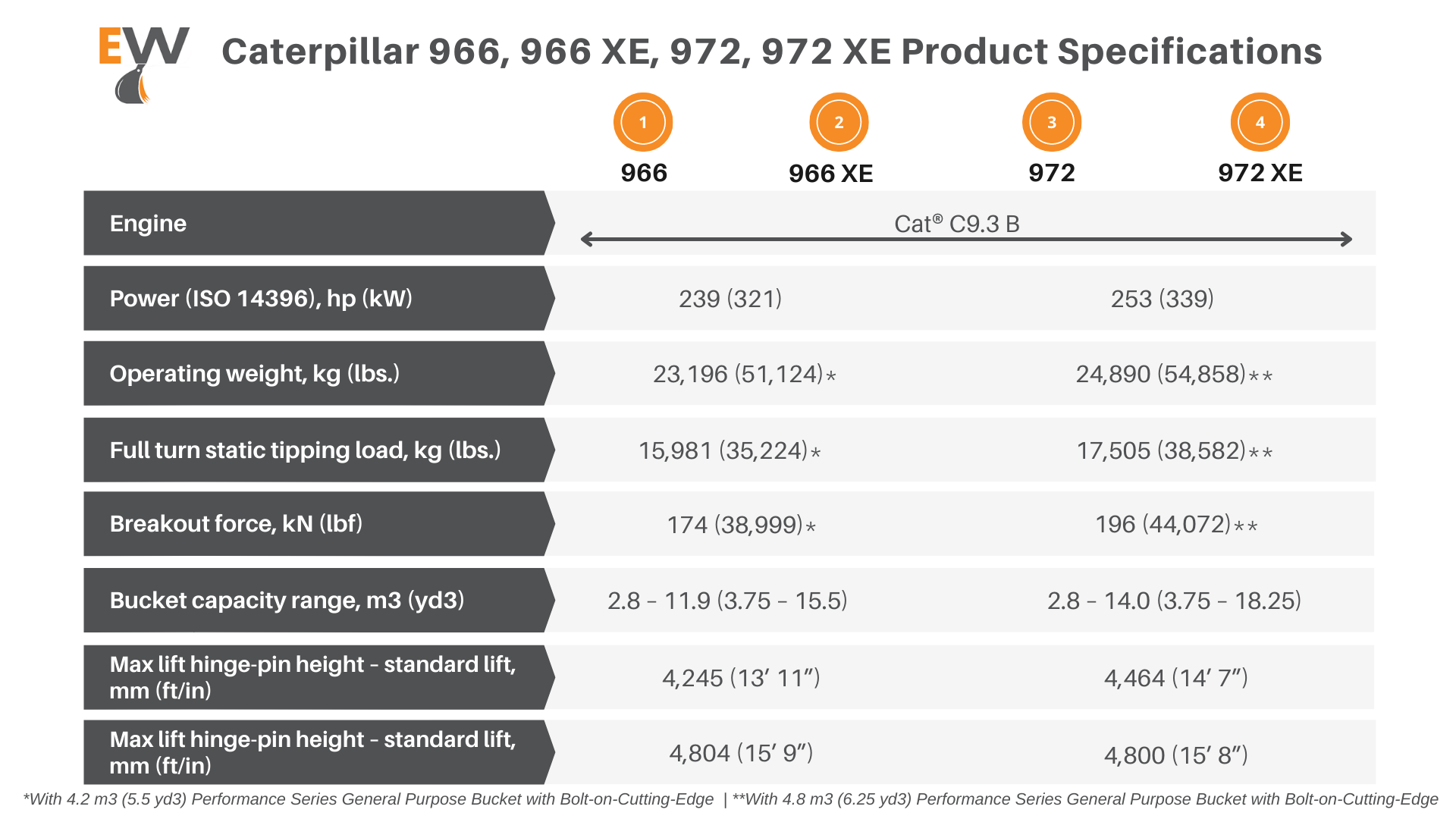
Caterpillar 966, 966 XE, 972, 972 XE wheel loader product specifications.Caterpillar; Graphic: Equipment World
Did you miss our previous article…
https://constructionosa.org/?p=871
Construction Groups Sue to Stop Biden Vaccine Mandate

Three construction industry groups have joined in the landslide of legal challenges to the Biden administration’s vaccine mandate for businesses with 100 or more employees.
They filed a petition for review November 15 with the 4th Circuit U.S. Court of Appeals, saying the mandate risks causing workers at larger construction companies to quit to work for smaller firms.
“Encouraging vaccine-hesitant workers to shift to smaller employers won’t improve health and safety,” said Stephen Sandherr, CEO of the Associated General Contractors. “It will just put firms that employ 100 or more workers at grave risk of losing the workers they need to complete projects.” The AGC is joined in the legal challenge with the American Road and Transportation Builders Association and the Signatory Wall & Ceiling Contractors Alliance.
The mandate is currently blocked from being enforced by the 5th Circuit Court of Appeals, which extended a stay of the emergency temporary standard issued by the U.S. Occupational Safety and Health Administration. OSHA’s standard would require employees of companies with 100 or more workers to get vaccinated by January 4 or undergo weekly Covid testing. Unvaccinated workers would also have to wear masks at work starting December 5.
The 5th Circuit opined November 12 that OSHA overstepped its authority, and that “the mandate has contributed to untold economic upheaval in recent months.”
The construction industry groups reiterated that position in their legal challenge. They also note that 64 percent of construction jobs are with smaller companies, and with the current labor shortage, employees at larger firms have plenty of options to move to smaller ones.
“The Biden Administration and Congress are in the process of launching a historic federal infrastructure investment initiative,” ARTBA President Dave Bauer said. “Unfortunately, OSHA’s proposal would disproportionally impact the same transportation construction industry employers and workers who proved they could safely deliver essential mobility improvements during the height of the Covid-19 pandemic.”
OSHA’s response to the 5th Circuit petition says the emergency standard “is necessary to address a grave danger” and that the “legal objections lack merit.”
OSHA has argued that the emergency standard is not a mandate because employees have a choice on whether to get vaccinated or get tested.
The standard does not require employers to pay for weekly Covid testing, and Covid vaccines are free. However, employers would be required to pay for time off for workers to get tested and vaccinated, as well as time off for any side effects from the vaccine.
The construction groups say they are supporting successful promotion efforts to get workers vaccinated, but the mandate would have the opposite effect.
“This industry supports the coronavirus vaccine and is working to get as many workers vaccinated as possible,” said Scott Casabona, spresident of SWACCA. “But crafting an unworkable rule that will do little to get construction workers vaccinated is an approach that is not only wrong, but likely counterproductive.”
A random drawing is expected to be held this week to determine which appeals court will hear the case, according to NPR. The cases will be consolidated into one.
Did you miss our previous article…
https://constructionosa.org/?p=868